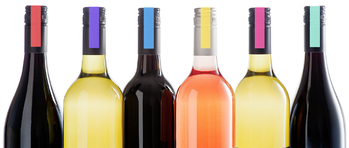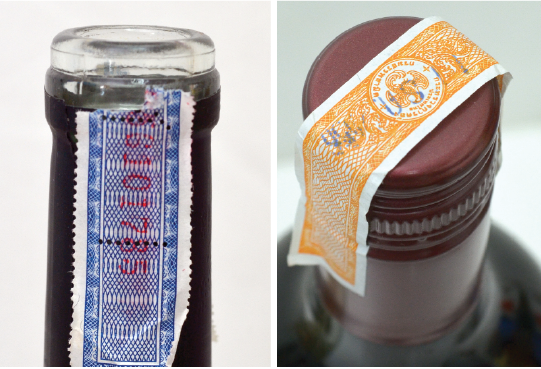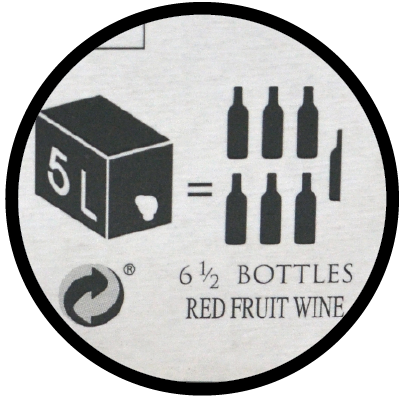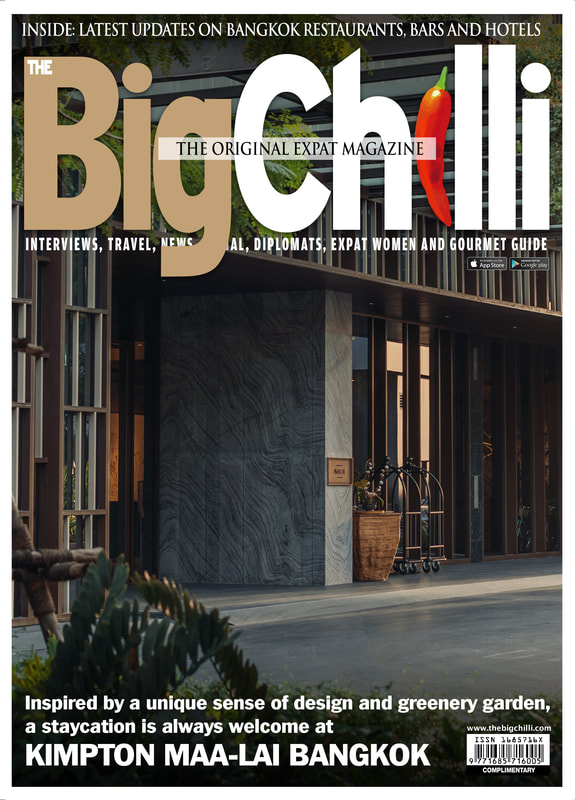Loved for its low cost but disdained for its lack of authenticity, this little understood beverage has made its mark in Thailand. For now

EVER since the government increased the already punitive duties on wine earlier this year, importers and local wineries have been looking for ways to make their products more affordable – and their solution has been an alcoholic beverage known as “fruit wine.”
Today, fruit wine can be found in supermarkets, shops and on the wine list of a growing number of restaurants, most usually as an inexpensive “house wine.” It comes in traditional wine bottles and in five-litre or even bigger boxes.
Today, fruit wine can be found in supermarkets, shops and on the wine list of a growing number of restaurants, most usually as an inexpensive “house wine.” It comes in traditional wine bottles and in five-litre or even bigger boxes.
Event organizers also often turn to this cheaper wine option to serve at parties and conferences.
Understanding the full commercial impact of fruit wines in Thailand is not easy. Even some of the country’s leading wine dealers find the situation confusing.
That said, many consumers do not know or care that they’re drinking fruit wine; it’s generally very drinkable, garners few complaints, and it provides that all-important buzz. More importantly, people like the fact that it costs significantly less than “traditional” wine.
But what is fruit wine, and how does it differ from traditional wine?
According to several importers, fruit wine sold in Thailand is a mixture of grape juice comprising one or more varietals, and juice that’s made from a fruit (often mulberry). There is confusion, however, about the ratio of this mix. Some say it can be as much as 95% grape juice, while others say it is supposed to contain no less than 80% pure grape juice, the rest being fruit concentrate.
Because it’s a mixture, fruit wine falls into a lower category of excise duty compared to imported wine. According to official figures, imported wine comprising 100% grapes attracts a duty of 300-400%, whereas local wines (“input locally”) as well as wines made from grapes grown in Thailand carry an excise duty of just 100%.
To confuse the situation further, some companies import bottles that are clearly labeled “fruit wine” into Thailand, and thereby attract the higher duties. Sources suggest such wine comes from Vietnam, a fellow ASEAN member country enjoying lower import duties, where it is mixed and bottled.
Countries like the US, Australia, New Zealand and the EU are apparently not permitted to export wine into Thailand that’s been mixed and bottled in ASEAN members.
How do you know you’re drinking fruit wine? By law, wine companies have to include the phrase “fruit wine” somewhere on the label. This usually appears in tiny lettering on the back of the bottle or on the bottom of the box. It is unknown whether all companies stick rigidly to this ruling.
The government also distinguishes between wines with the stamps attached to the top of every bottle. Imported wines – even fruit wines – carry a blue sticker, while local wines have a yellow sticker.
The sticker system used in Thailand covers all types of alcoholic beverages sold in Thailand (see chart on next page).
Taste-wise, fruit wine has both its fans and detractors. One of Thailand’s biggest wine companies insists that only the savviest drinker can tell the difference between “real” wine and fruit wine, and it is therefore widely accepted and enjoyed. This view is not shared, however, by a local restaurateur who recently commented: “To call it wine at all is an insult to the consumer and to wine makers the world over.”
Price is not an indicator. Major retailers like Tesco are currently importing wine which it says contains 100% grapes sourced and bottled in Australia and costs B349 per bottle. Industry watchers calculate the profit on wine sold at this price cannot be more than B60 per bottle.
The sudden rise of fruit wine in Thailand, however, could be short-lived, according to certain sources, as government officials have no way of testing the 80-20 ratio on grapes to wine. This is seen as a loophole in the law which they wish to close.
Understanding the full commercial impact of fruit wines in Thailand is not easy. Even some of the country’s leading wine dealers find the situation confusing.
That said, many consumers do not know or care that they’re drinking fruit wine; it’s generally very drinkable, garners few complaints, and it provides that all-important buzz. More importantly, people like the fact that it costs significantly less than “traditional” wine.
But what is fruit wine, and how does it differ from traditional wine?
According to several importers, fruit wine sold in Thailand is a mixture of grape juice comprising one or more varietals, and juice that’s made from a fruit (often mulberry). There is confusion, however, about the ratio of this mix. Some say it can be as much as 95% grape juice, while others say it is supposed to contain no less than 80% pure grape juice, the rest being fruit concentrate.
Because it’s a mixture, fruit wine falls into a lower category of excise duty compared to imported wine. According to official figures, imported wine comprising 100% grapes attracts a duty of 300-400%, whereas local wines (“input locally”) as well as wines made from grapes grown in Thailand carry an excise duty of just 100%.
To confuse the situation further, some companies import bottles that are clearly labeled “fruit wine” into Thailand, and thereby attract the higher duties. Sources suggest such wine comes from Vietnam, a fellow ASEAN member country enjoying lower import duties, where it is mixed and bottled.
Countries like the US, Australia, New Zealand and the EU are apparently not permitted to export wine into Thailand that’s been mixed and bottled in ASEAN members.
How do you know you’re drinking fruit wine? By law, wine companies have to include the phrase “fruit wine” somewhere on the label. This usually appears in tiny lettering on the back of the bottle or on the bottom of the box. It is unknown whether all companies stick rigidly to this ruling.
The government also distinguishes between wines with the stamps attached to the top of every bottle. Imported wines – even fruit wines – carry a blue sticker, while local wines have a yellow sticker.
The sticker system used in Thailand covers all types of alcoholic beverages sold in Thailand (see chart on next page).
Taste-wise, fruit wine has both its fans and detractors. One of Thailand’s biggest wine companies insists that only the savviest drinker can tell the difference between “real” wine and fruit wine, and it is therefore widely accepted and enjoyed. This view is not shared, however, by a local restaurateur who recently commented: “To call it wine at all is an insult to the consumer and to wine makers the world over.”
Price is not an indicator. Major retailers like Tesco are currently importing wine which it says contains 100% grapes sourced and bottled in Australia and costs B349 per bottle. Industry watchers calculate the profit on wine sold at this price cannot be more than B60 per bottle.
The sudden rise of fruit wine in Thailand, however, could be short-lived, according to certain sources, as government officials have no way of testing the 80-20 ratio on grapes to wine. This is seen as a loophole in the law which they wish to close.
EXCISE DUTY FOR
SPIRITS IN THAILAND
• Imported whisky = green sticker – excise duty: 100%
• Imported cognac = brown sticker – excise duty: 100%
• Imported vodka, gin, tequila, cocktail mixer (others) = orange sticker – excise duty: 100%
• Local whisky = dark blue sticker – excise duty: n.a.
• Imported wines = blue sticker – excise duty: 300-400%
• Wines bottled in Thailand (“input locally”) = yellow – excise duty: 100%
• Local wines = yellow
sticker – excise duty: 100%
• Imported sherry = blue sticker – excise duty: n.a.
• Cider = orange sticker – excise duty: n.a.
Chinese imported spirits carry many different colours.
SPIRITS IN THAILAND
• Imported whisky = green sticker – excise duty: 100%
• Imported cognac = brown sticker – excise duty: 100%
• Imported vodka, gin, tequila, cocktail mixer (others) = orange sticker – excise duty: 100%
• Local whisky = dark blue sticker – excise duty: n.a.
• Imported wines = blue sticker – excise duty: 300-400%
• Wines bottled in Thailand (“input locally”) = yellow – excise duty: 100%
• Local wines = yellow
sticker – excise duty: 100%
• Imported sherry = blue sticker – excise duty: n.a.
• Cider = orange sticker – excise duty: n.a.
Chinese imported spirits carry many different colours.





















